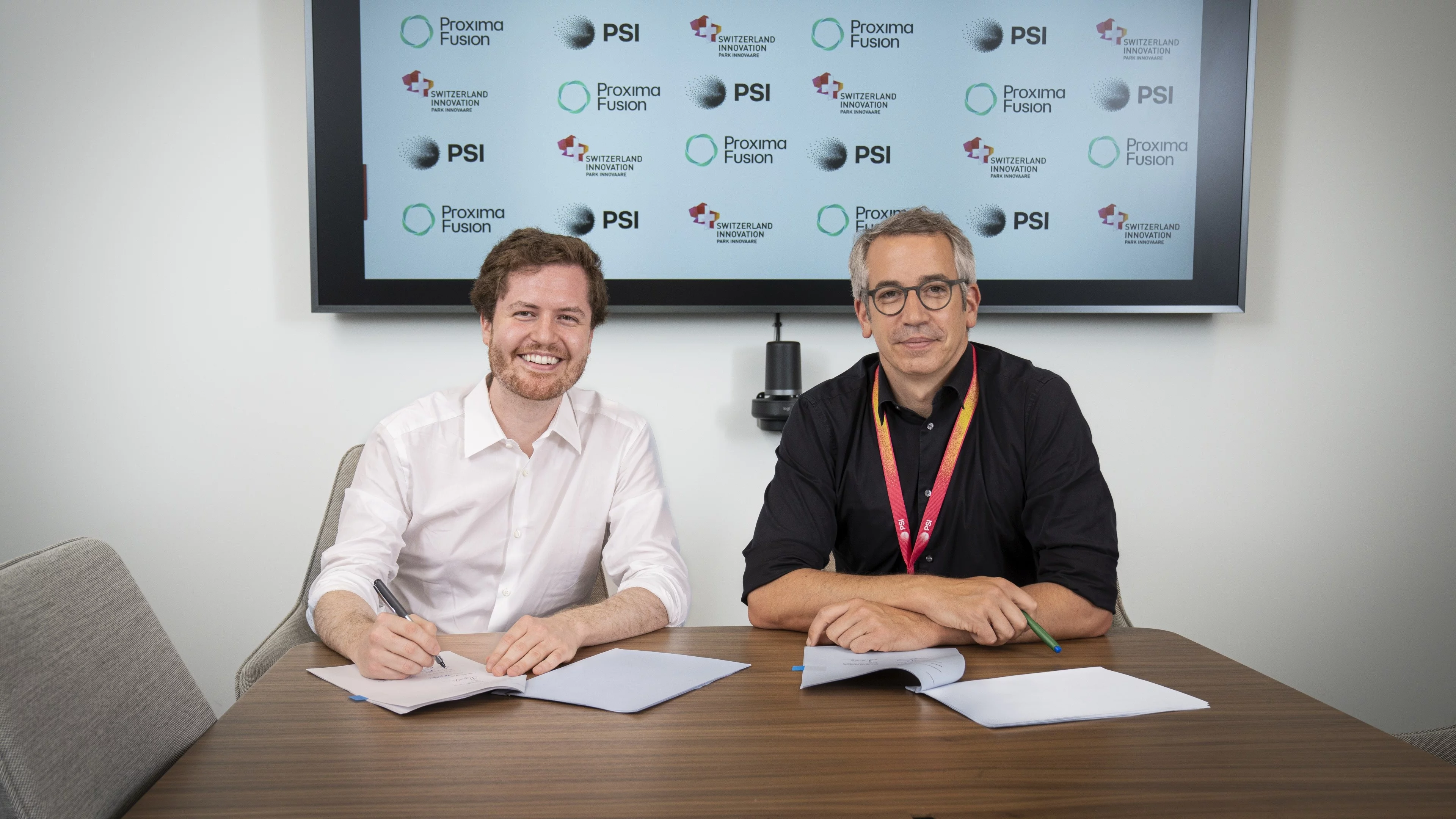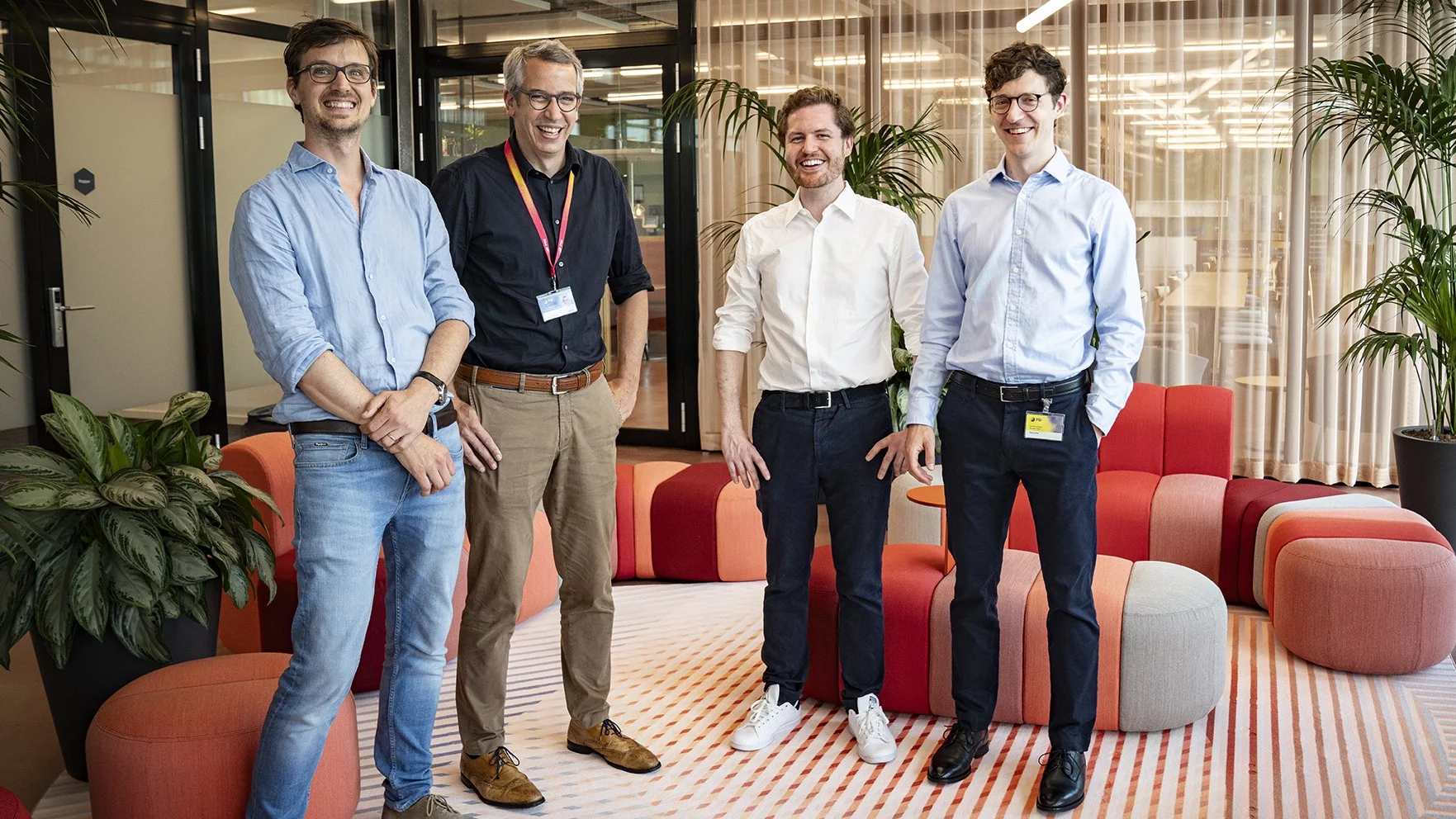Proxima Fusion and the Paul Scherrer Institute PSI signed a framework agreement to advance the development of high-temperature superconducting magnet technology. Several Members of Proxima Fusion will move to Park Innovaare and thus in the immediate vicinity of PSI.
On 28 June 2024, Proxima Fusion and the Paul Scherrer Institute PSI signed a framework agreement to advance the development of high-temperature superconducting (HTS) magnet technology, with applications for both fusion energy and particle physics research. Munich-based Proxima Fusion is the first spin-out from the Max Planck Institute for Plasma Physics (IPP), building on decades of groundbreaking fusion research.
This new long-term collaboration will begin with several members of the Proxima Fusion team relocating from Munich to Switzerland Innovation Park Innovaare in Villigen, thus becoming immediate neighbours of PSI. They will be supported by Proxima Co-Founder and Head of Engineering Martin Kubie and work closely with PSI scientists and engineers. Significant investments by Proxima in Switzerland are envisioned in both personnel and hardware development.
“Potential to greatly advance high-temperature superconducting magnet technology”
“Proxima’s partnership with PSI has the potential to greatly advance HTS magnet technology, with powerful engineering implications,” said Kubie. “We look forward to strengthening our collaboration to accelerate the path to commercial fusion, working alongside some of the world’s best engineers developing particle accelerators.”
Proxima Co-Founder and CEO Francesco Sciortino said, “This agreement underscores the strength of European innovation and the advantages of cooperation between European engineers and scientists with a shared commitment to solving hard problems. Joining forces with PSI on the development of HTS magnets is a critical step toward Proxima’s goal of leading Europe into a new era of clean energy, for good.”
Bernhard Auchmann is a lead engineer for superconducting magnets at PSI. His team has recently achieved an 18 Tesla HTS solenoid magnet and is developing superconducting magnet technology for particle accelerators for high-energy physics. “We are excited to partner with Proxima Fusion, whose dedication and openness to innovation we have quickly come to appreciate,” said Auchmann. “By joining our experience with the fusion community, we are well-positioned to address engineering challenges in cutting-edge magnet technology. The collaboration between Proxima Fusion and PSI sets the stage for significant progress in the coming years.”
Park Innovaare becoming a Fusion Power Cluster
Munich-based Proxima Fusion is the second company from the fusion energy sector to become a resident at Park Innovaare. Renaissance Fusion, a French start-up, has been a tenant at Park Innovaare since October 2023. Renaissance Fusion set itself the task of bringing fusion energy to the grid by combining the proven Stellarator fusion apparatus with its proprietary manufacturing technology for high-temperature superconducting magnets and liquid metal shielding.
Text: Proxima Fusion/Switzerland Innovation Park Innovaare/Paul Scherrer Institute PSI
© PSI provides image and/or video material free of charge for media coverage of the content of the above text. Use of this material for other purposes is not permitted. This also includes the transfer of the image and video material into databases as well as sale by third parties.
Contact
Bernhard Auchmann
Center for Accelerator Science and Engineering
Paul Scherrer Institute PSI
+41 56 310 30 26
bernhard.auchmann@psi.ch
[German, English]
About Proxima Fusion
Proxima Fusion spun out of the Max Planck IPP in 2023 and has raised a total of €27.5M (approximately $30M) in funding to work toward the first generation of fusion power plants using quasi-isodynamic (QI) stellarators. QI stellarators are the clearest, most robust path to commercial fusion power, and Proxima’s simulation-focused approach leverages advanced computing to build on the ground-breaking results of the Wendelstein 7-X (W7-X) experiment, the world's most advanced stellarator at the Max Planck IPP. The development of stellarator magnets based on HTS magnets is a critical milestone for Proxima Fusion—one that the team looks forward to tackling with its PSI collaborators.
About Switzerland Innovation Park Innovaare
Park Innovaare connects technology-oriented start-ups, SMEs and R&D departments of established companies with the cutting-edge research of our strategic partners—the Paul Scherrer Institute PSI and the University of Applied Sciences Northwestern Switzerland FHNW—and offers 23’000 m2 state-of-the-art laboratory and office space. Park Innovaare is one of six sites within the Switzerland Innovation network.
Switzerland Innovation Park Innovaare
About PSI
The Paul Scherrer Institute PSI develops, builds and operates large, complex research facilities and makes them available to the national and international research community. The institute's own key research priorities are in the fields of future technologies, energy and climate, health innovation and fundamentals of nature. PSI is committed to the training of future generations. Therefore about one quarter of our staff are post-docs, post-graduates or apprentices. Altogether PSI employs 2300 people, thus being the largest research institute in Switzerland. The annual budget amounts to approximately CHF 460 million. PSI is part of the ETH Domain, with the other members being the two Swiss Federal Institutes of Technology, ETH Zurich and EPFL Lausanne, as well as Eawag (Swiss Federal Institute of Aquatic Science and Technology), Empa (Swiss Federal Laboratories for Materials Science and Technology) and WSL (Swiss Federal Institute for Forest, Snow and Landscape Research).


